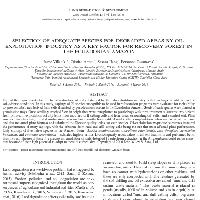Resumen
- One of the requirements for the forest restoration of soils disturbed by the oil-exploitation industry is that saplings be able to endure soil-adverse conditions. In this study, saplings of 20 species susceptible to be used in reforestation programs were evaluated for their ability to grow on substrates derived from soils disturbed by petroleum extractions in the Ecuadorian Amazon. Seeds of each species were planted in germination trays. Once seedlings reached 5 cm in height they were transplanted to plastic bags with three treatment substrates: two derived from petroleum-exploitation activity (soils from mud and drill cutting cells and from areas surrounding oil wells) and a control soil. Plant survival rate, stem height, and diameter were measured on a weekly basis until 14 weeks after transplantation, when we harvested the plants and also measured plant biomass and calculated the Dickson quality index for each species. Oil-exploitation by-product substrates impaired the performance of many saplings, with the substrate from mud and drill cutting cells being the one that most affected plant performance. Only saplings of five native species in the Amazon basin—Apeiba membranaceae, Cedrelinga cateniformis, Inga densiflora, Myroxylon balsamum, and Pouroma cecropiifolia—exhibited high or similar Dickson quality index values in all soil treatments and performed better than the rest. The use of these five species in remediation of soils disturbed by petroleum extraction in the Amazon basin could prove important because of their high potential to adapt to these disturbed sites.
